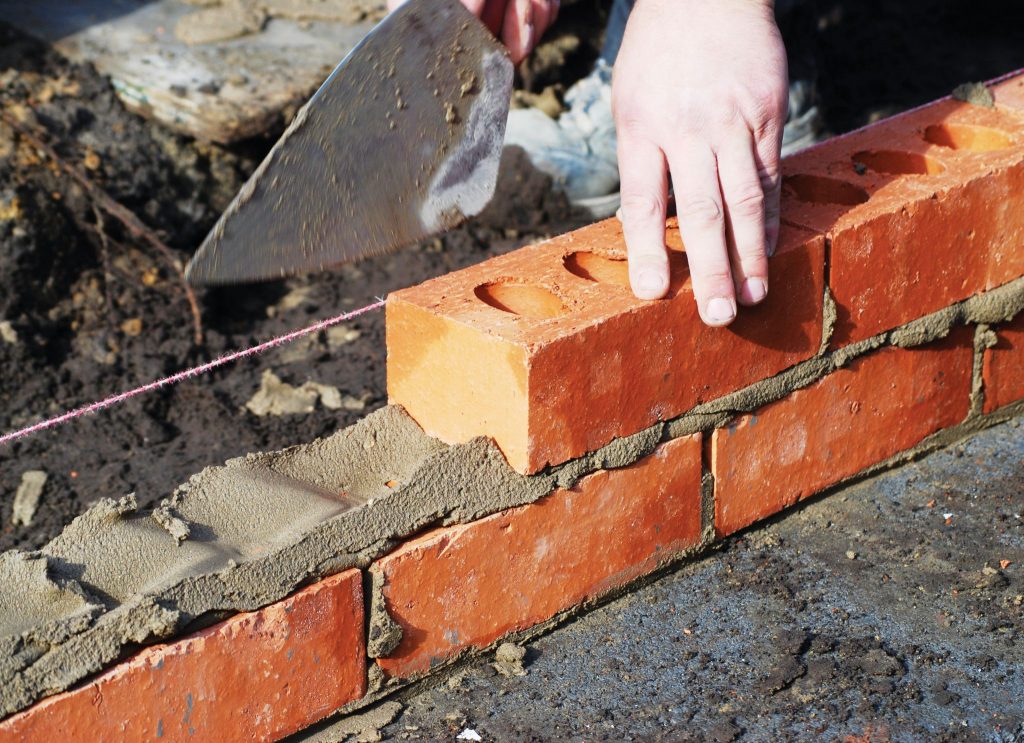The amount of water used for masonry mortar is 260-300 kg/m³, and the amount of cement used for traditional masonry mortar is 180-300kg/ m³. The main role of controlling the water retention rate is to ensure that too much moisture of mortar will not be absorbed by block materials before setting and hardening, and that it won’t lead to no enough water for cement hydration in the mortar due to too fast water loss, so as not to reduce the strength of mortar itself and the bond strength between mortar and block materials. As we all know, the theoretical amount of water required for complete hydration of cement is 26% that of the cement mass. The amount of water used for mortar has greatly exceeded that of water required for cement hydration, and the exceeding amount is mainly to meet the needs of construction. The strength of cement paste is mainly related to the water-cement ratio. The larger the water-cement ratio is, the greater the porosity of cement paste will be and the lower the strength of cement paste will be. Also, the strength of mortar will get reduced accordingly. Therefore, the water retention of mortar is OK as long as it can ensure the operability of mortar and the amount of water required for cement hydration in the mortar.
If the water retention of masonry mortar is too good, then the actual water retained in the mortar will be too much and the actual water-cement ratio of mortar will be great, so the actual strength of mortar will be low and the bond strength with block materials will be low accordingly. In addition, if the water retention of masonry mortar is too good, the moisture will not be easily absorbed by the block materials, which will also affect the bonding between the cement paste and the block materials, thus affecting the speed of laying blocks and increasing the difficulty of construction. Therefore, the water retention indicators of mortar should be related to the block materials. If the block material has an open pore structure and it is easy to get thoroughly watered, such as sintered bricks, then the water retention of masonry mortar can be lower, just reaching above 80%. For instance, when the traditional mortar is used for laying of sintered bricks, the effect is very good. If the block material has a closed pore structure and high porosity, and it is not easy to get thoroughly watered or thorough watering is not allowed for construction of block material, then the water retention of masonry mortar should be increased to meet the requirements of water amount for cement hydration in the mortar.
During laying autoclaved lime-sand bricks, when the masonry mortar with a water retention rate of 80% is used for laying lime-sand bricks, due to the low water retention rate, the moisture of mortar will be easily absorbed by lime-sand bricks, resulting in a serious shortage of water needed for cement hydration in the mortar joints, making the cement hydration not work properly, and reducing the real strength of mortar and the bond strength between mortar and lime-sand bricks. Therefore, the water retention rate of mortar for laying lime-sand bricks should be controlled over 88%. However, if we increase the water retention rate of mortar for laying lime-sand bricks to more than 95%, it will lead to the difficult absorption of moisture in the mortar joints, an decrease in the actual strength of mortar as well as an decrease in the bond strength between mortar and bricks. Moreover, if the water retention of mortar is too good, during laying, bricks are not easy to get stably bonded with mortar and the laying height will get restricted. Therefore, the water retention of masonry mortar is not the higher the better. For different block materials, there should be a corresponding range of water retention rate.

